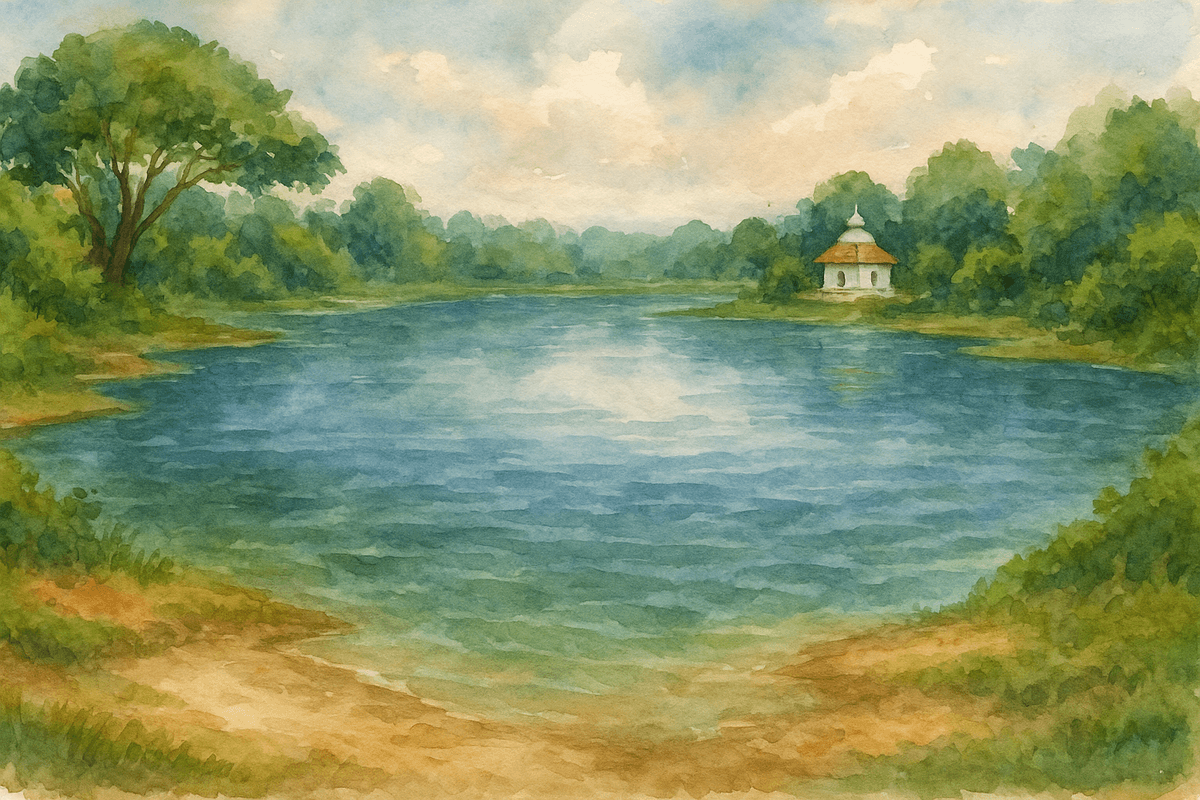The Presiding Deity
The presiding deity here is Koragathaniya Daiva — considered one of the most powerful divine forces (Karnika Shakti) of Tulu Nadu, affectionately and respectfully called “Ajja” (grandfather) by devotees.
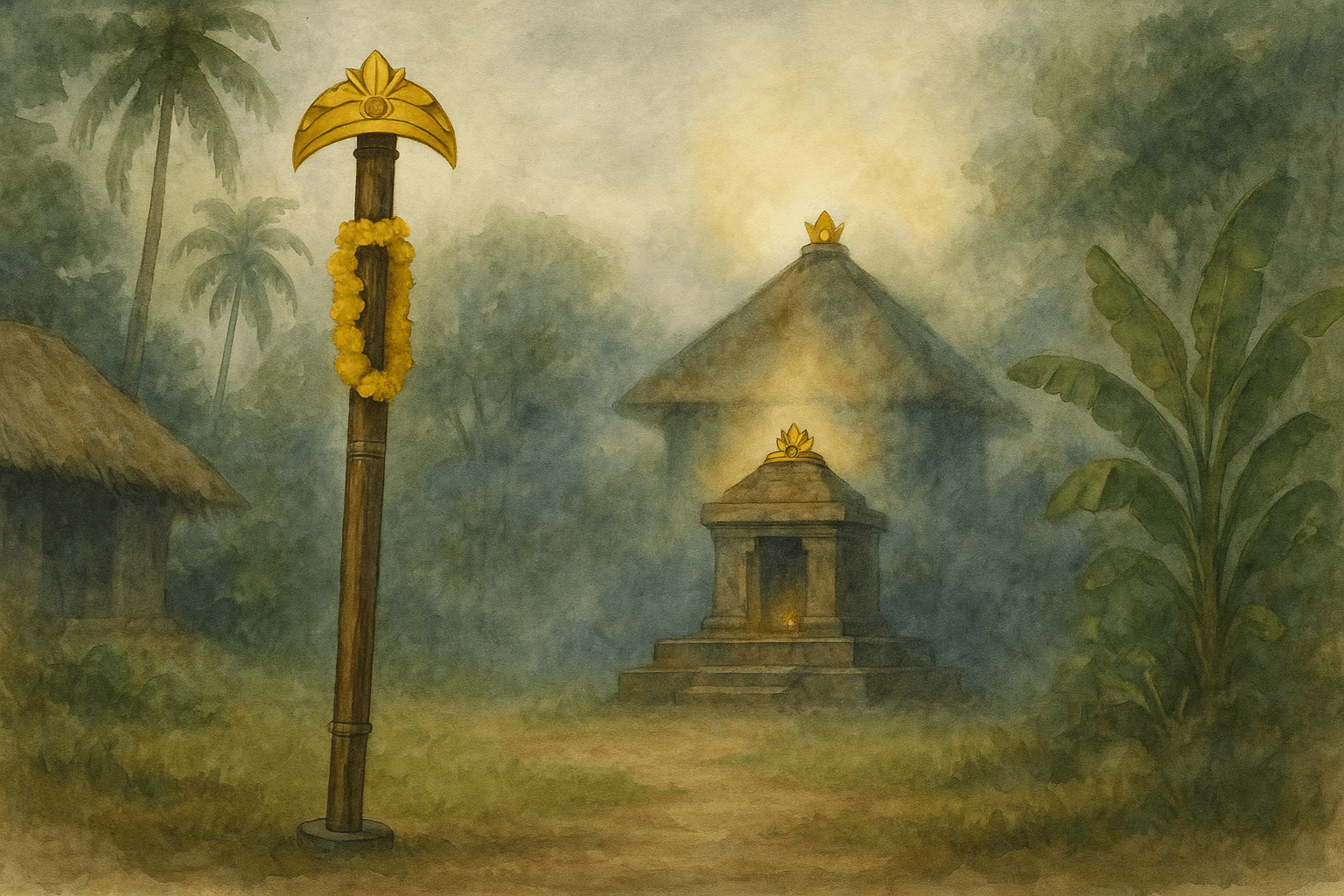
Birth and Early Life of Thaniya
According to the Paardana (traditional oral ballad), in Koragara Koppa, a boy named Thaniya was born to Aachu Maire and her husband from Panambur Odi (Ooravana Odijanishi). He lost his mother at a young age, and later his father also passed away. With no surviving descendants of the Koragara lineage, Thaniya left his home, wandering in a state of orphanhood.
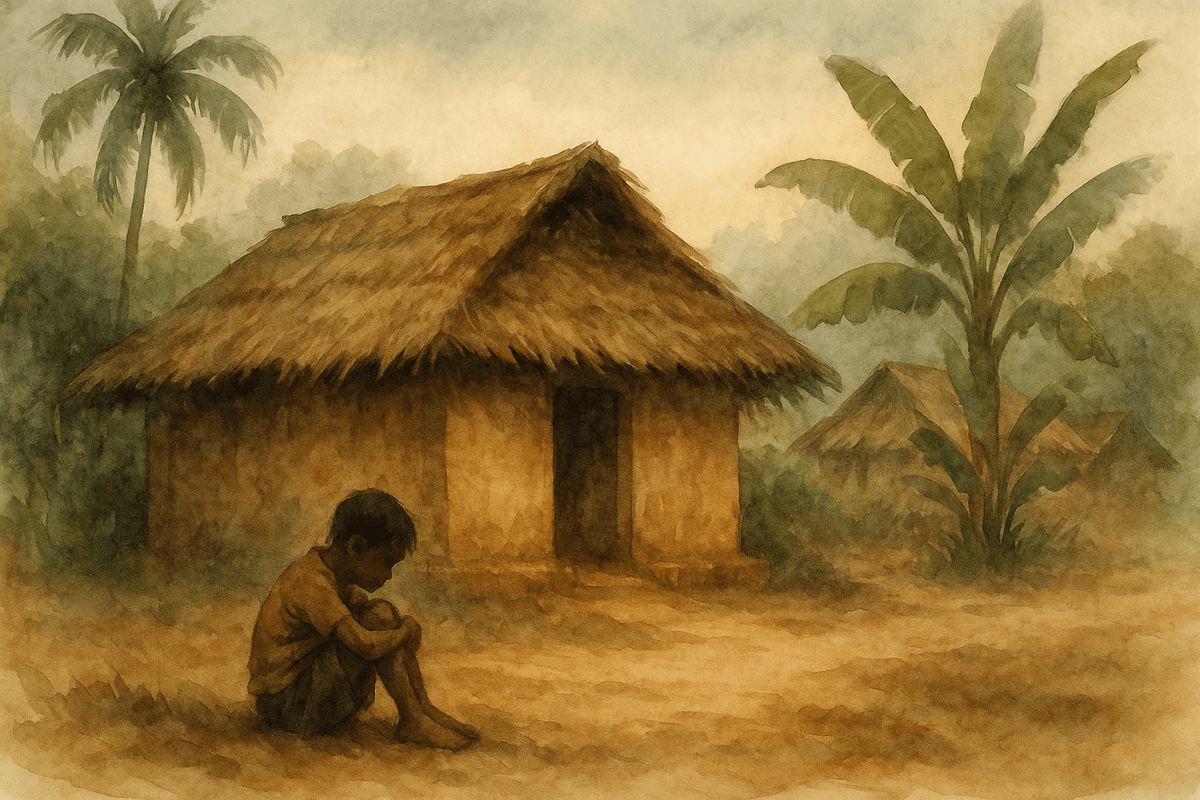
Shelter Under Mairekke Baidetty
While sitting in such a helpless state, he was noticed by Mairekke Baidetty from Ensuru Barke, who inquired about his situation. She brought him to her home at Ensuru Barke, offering him shelter, food to eat, clothes to wear, and a place to stay. In return, Thaniya did whatever work he could manage at Mairekke Baidetty’s household.
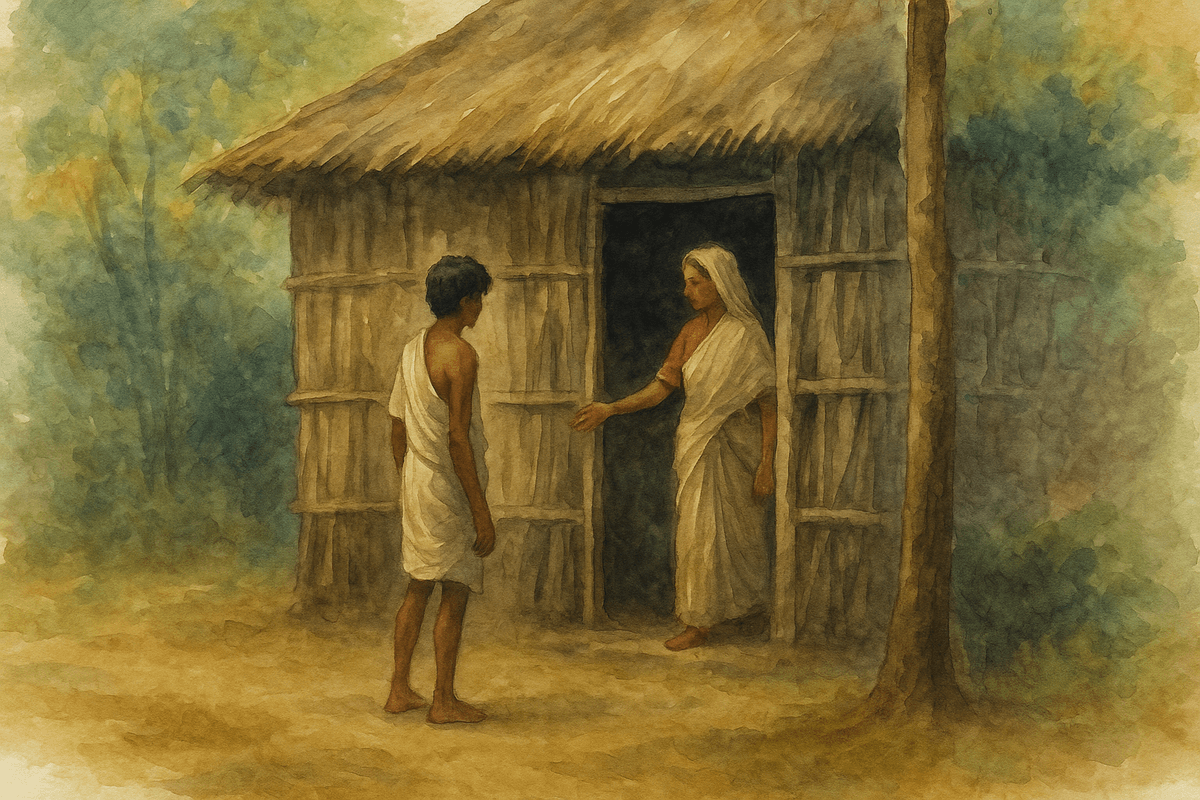
The Miracle of the Toddy
One day, Mairekke asked him to carry her Shendi (a pot of toddy or fermented drink) on his head. Strangely, no matter how much toddy was taken from the pot, it would not get emptied. When asked why this was so, she said that she had made a vow (Harake) to Kanyavu Lekkisiri (Raktheshwari) — that once the pot was emptied, she would offer seven measures (Pude) of coconut kernels and Siri-Bonda (a type of offering) at the Sanctum (Maada) of the Goddess.
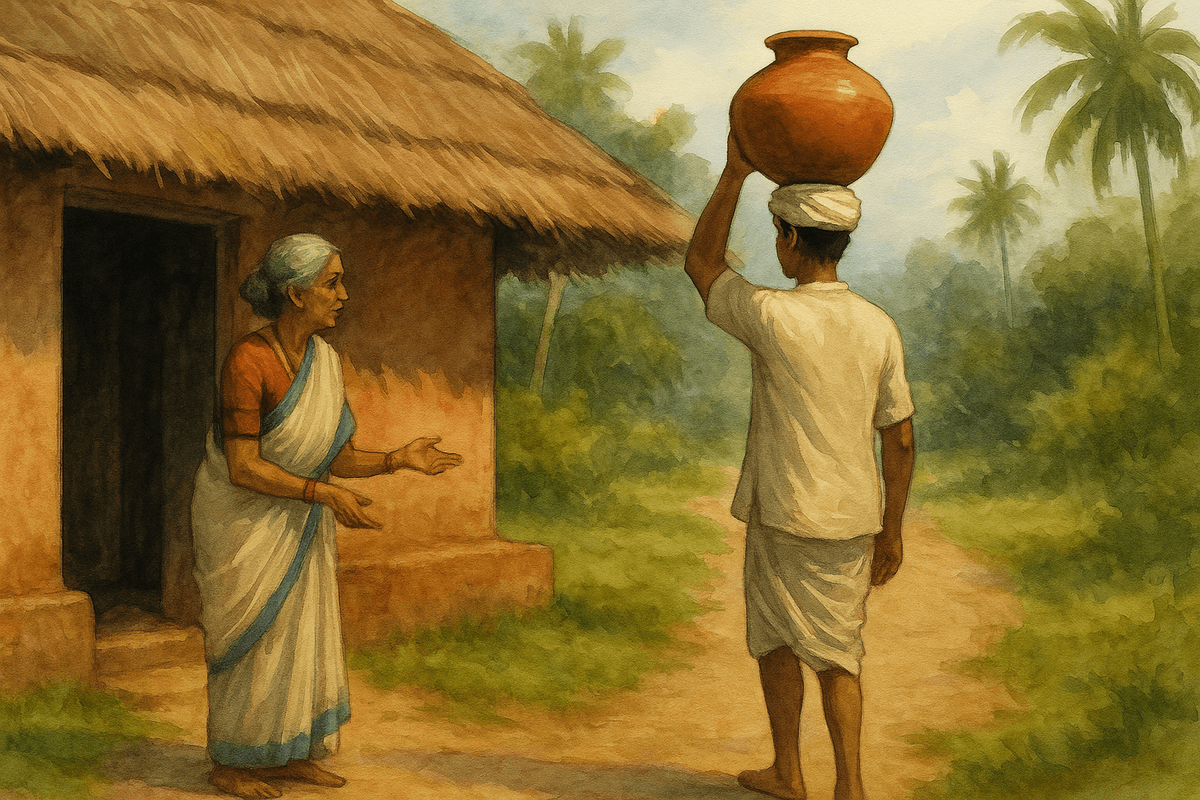
The Divine Test at the Shrine
When the time came to fulfill this vow, they looked for someone to deliver the offerings but could find no one. Then, 16-year-old Thaniya volunteered to carry them himself. He carried all seven measures on his own and went to the deity’s shrine.
However, when the temple attendants saw him bringing the Bonda offering, they refused to let him inside, considering him of a “low caste” and made him wait outside.
At that moment, Thaniya noticed a citrus fruit (narangaayi maapla) in a tree nearby. Thinking it would be useful for his mother Mairekke to make pickle, he climbed up to pluck it. As he reached towards the Muguli (sacred pot or Kalasha) atop the shrine’s Sanctum, the presiding Goddess Lekkisiri of the Maada is said, according to the Paardana, to have made him vanished him into the divine realm (versions may vary).
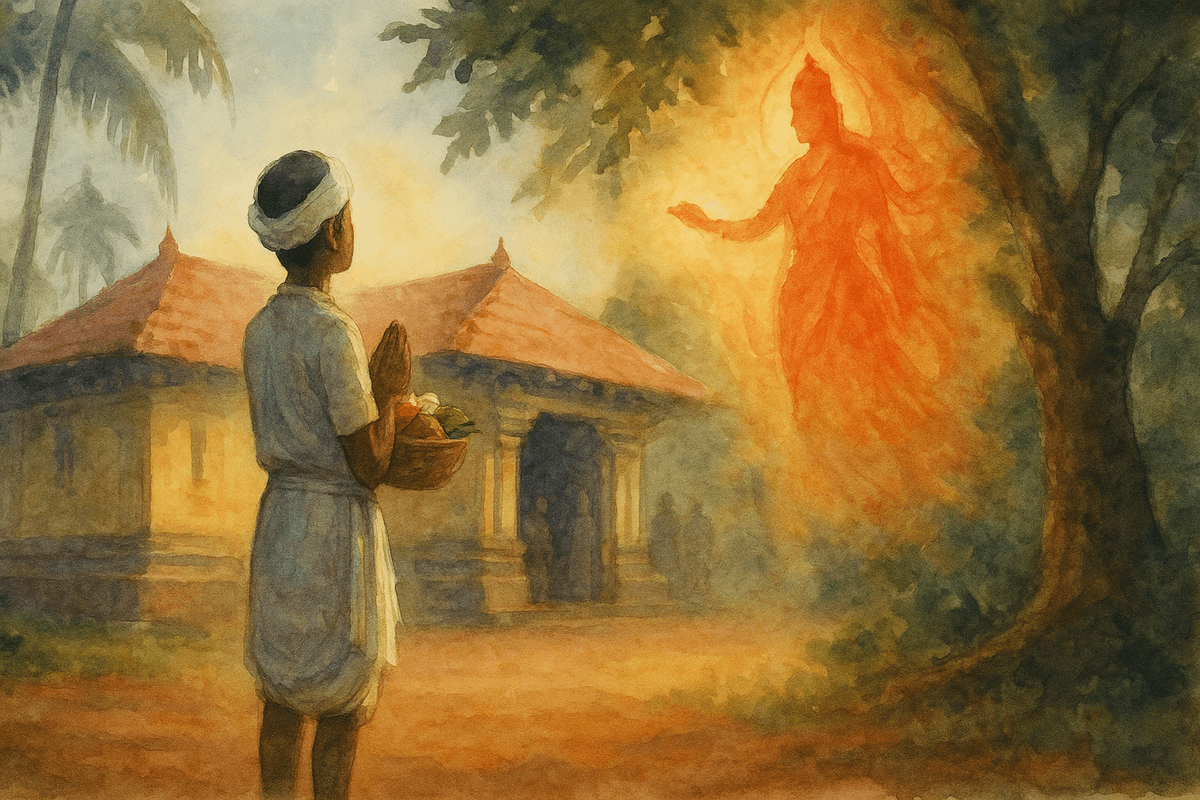
Transformation into a Divine Force
Thus, having entered the divine realm, Koragathaniya — now transformed into a powerful spirit deity of the thousand regions of Mangalore (Mangaluru Saavira Seeme) — crossed over to meet the Goddess Mangaladevi. From there, he crossed the Nethravathi River (at a place known as Addanda Sudhe) and arrived at Kallapu.
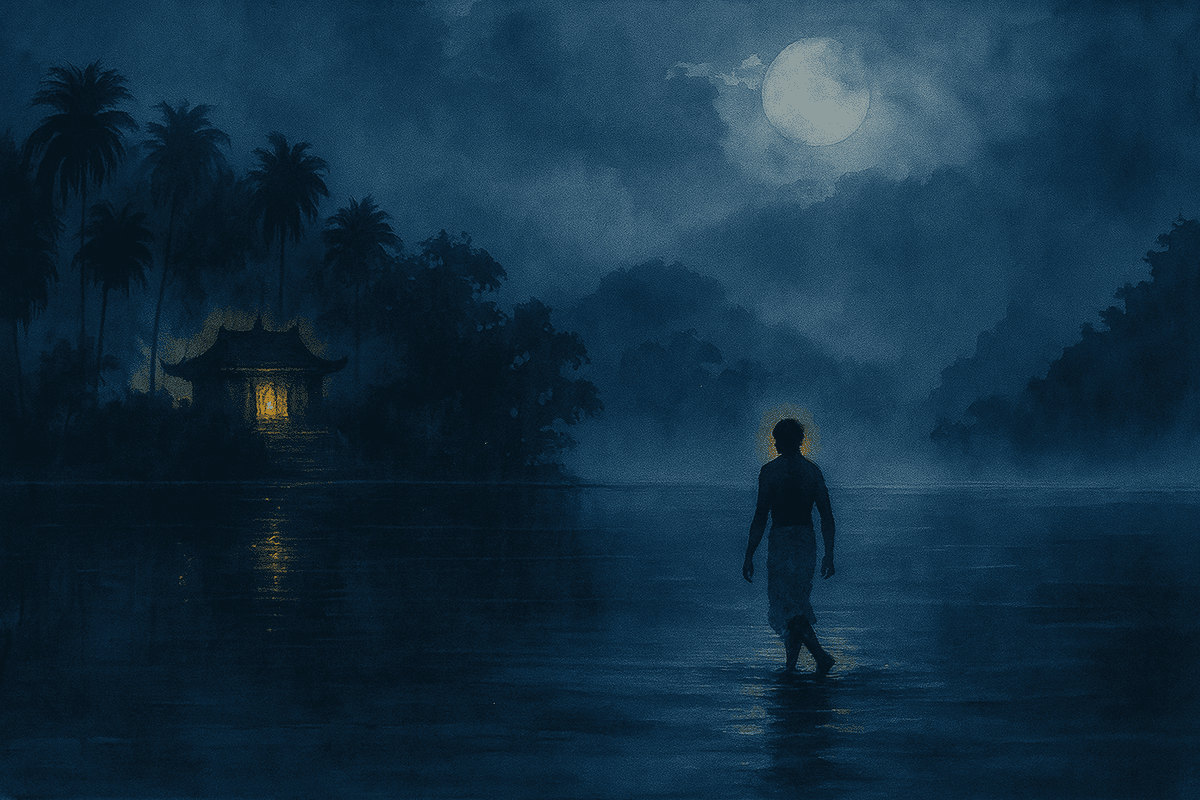
The Pact with Guligajja
There, at a place called Burdugoli, he entered into a pact (Odanbadike) with the deity Guliga.
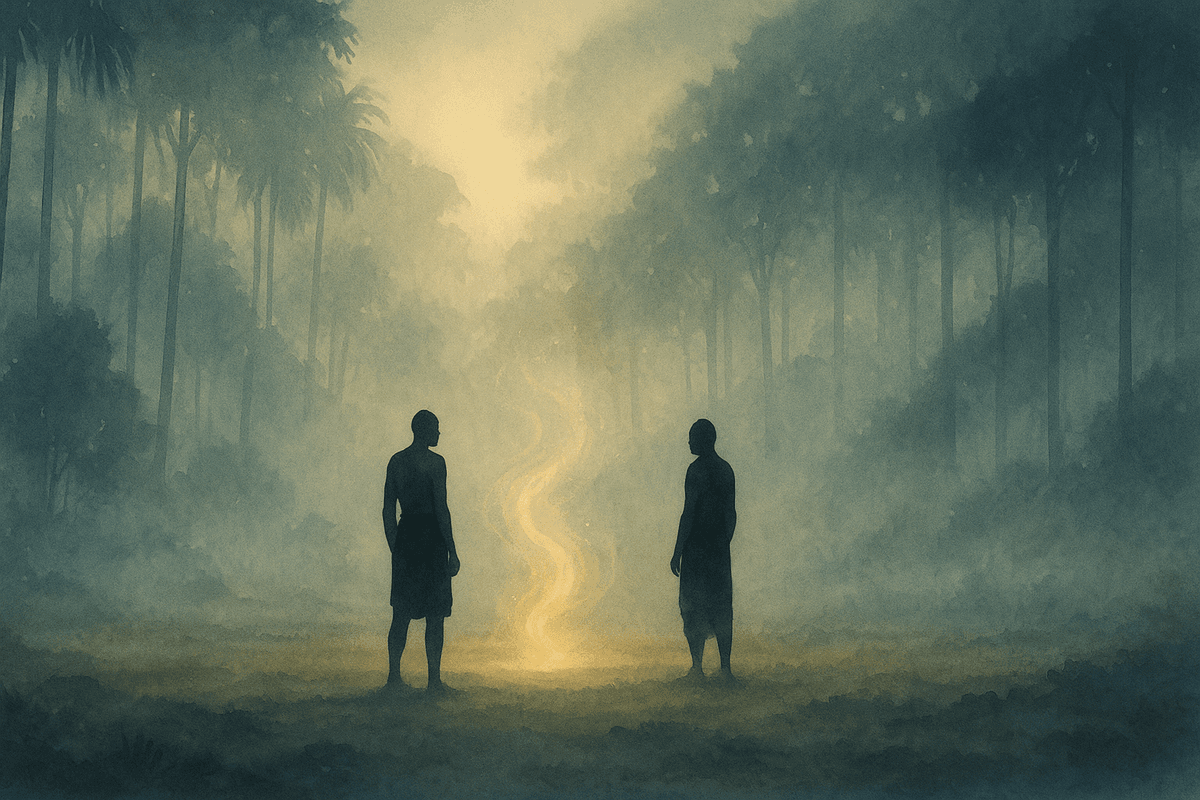
The Battle of Saarlapatta
At that time in Saarlapatta, during the ceremonial display of the divine authority by the Rajan Daivas known as Panjandhaya Bunta Daivas, the Arasu Daivas from Udyavara — two brothers — attempted to extend their domain into Saarlapatta. This led to a conflict (Kolala — battle) between the Arasu Daivas and the Panjandhaya Daivas, in which the Arasu Daivas initially gained the upper hand.
It was at this moment that Koragathaniya met the Panjandhaya Daivas. After hearing about the battle, he assured them in strong words that he would restore the lost authority of the Rajan Daivas over Saarlapatta. At first, the Panjandhaya Daivas doubted whether he could achieve this, but eventually they agreed — promising that if he restored their status, they would grant him the right to hold Kola Seve (ritual performance) in seven places within Saarlapatta and to receive Agelu Seve (honour offerings) in every household village and forest offerings (Oorudu Agel-Kaadudu mechi).

The Victory and Divine Decree
Following this, Koragathaniya entered Kutharaguttu. Through his mystical powers, he placed meat from sacred cow (kapila) in his basket and confronted the Arasu Daivas at a place called Bardakatte. When he threw the meat in front of them, the Arasu Daivas retreated. He chased them as far as Kaneerthota, where the Malayala Chamundi and the Arasu Daivas sought refuge at Somnath.
There, the deity Vaidyanatha intervened, mediated the dispute, and decreed that the authority over Saarlapatta (from Bengodi Ane to Jamat) should remain with the Panjandhaya Daiva.
In return for restoring their lost authority, the Panjandhaya Daivas granted Koragathaniya the right to hold Kola Seve in seven locations within Saarlapatta — Dekkadu, Bolya, Deralkatte, Tala, Ujila, Mittagel, and Someshwara — all situated in highlands.
Thus, Koragathaniya came to be recognized in Saarlapatta as the principal deity who demonstrates divine power and authority (Karnika thorisuvantha Daiva).

The Divine Recognition and Roles
Thereafter, as stated in the divine proclamation (Daiva nudiyanthe), Koragathaniya came to be described as:
From Kannadakere to Bardhakatte, Ullaya dedicated this land to Swami Koragajja and Guligajja for its protection. Swami Koragajja is worshipped at Valasari place of Shri Mahavishnu Dhoomavathi shrine.; and as the deity who guards the Yelver Siri's beneath the Sanctum of Raktheshwari (Lekkisiri).
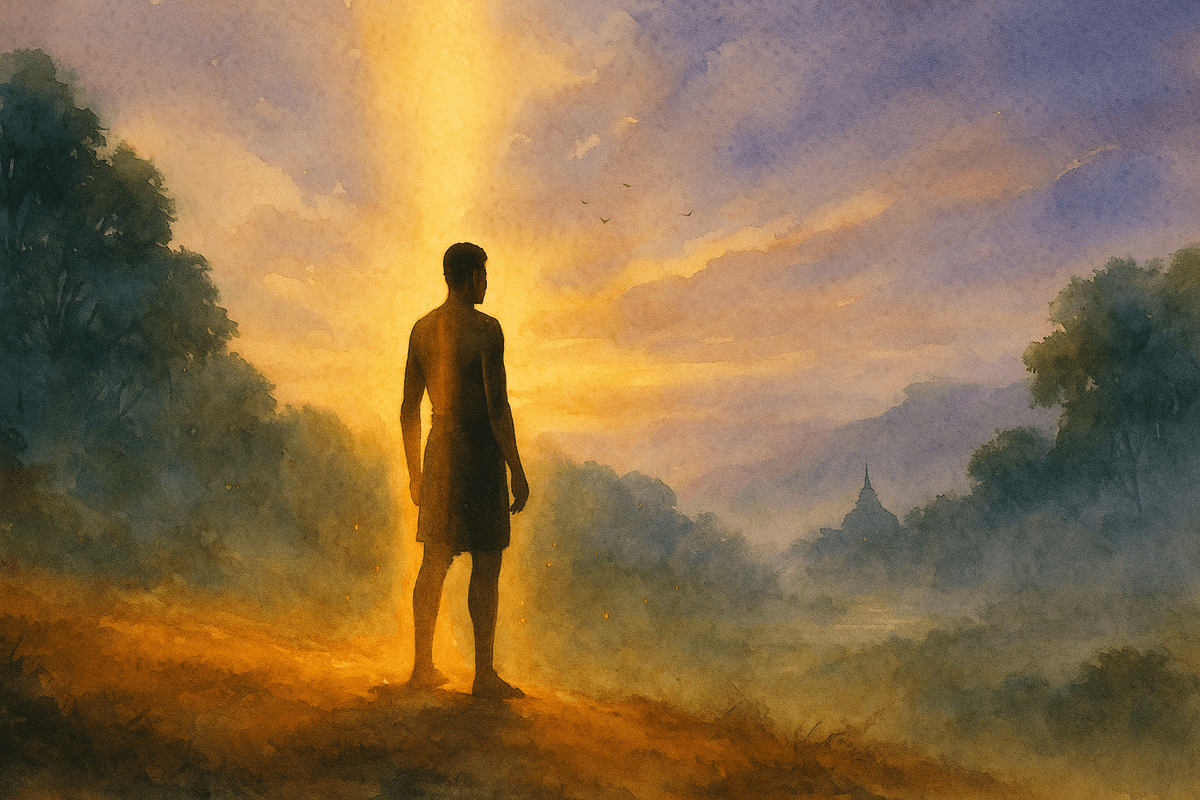
Unity of the Deities
Thus, while guarding the Yelver Siri's, and together with Bermer (Ullaya) and the Goddess Raktheshwari (Lekkisiri) in the courtyard of the Sanctum (Maada), Koragajja — along with Guligajja — manifests here as a highly powerful divine force.
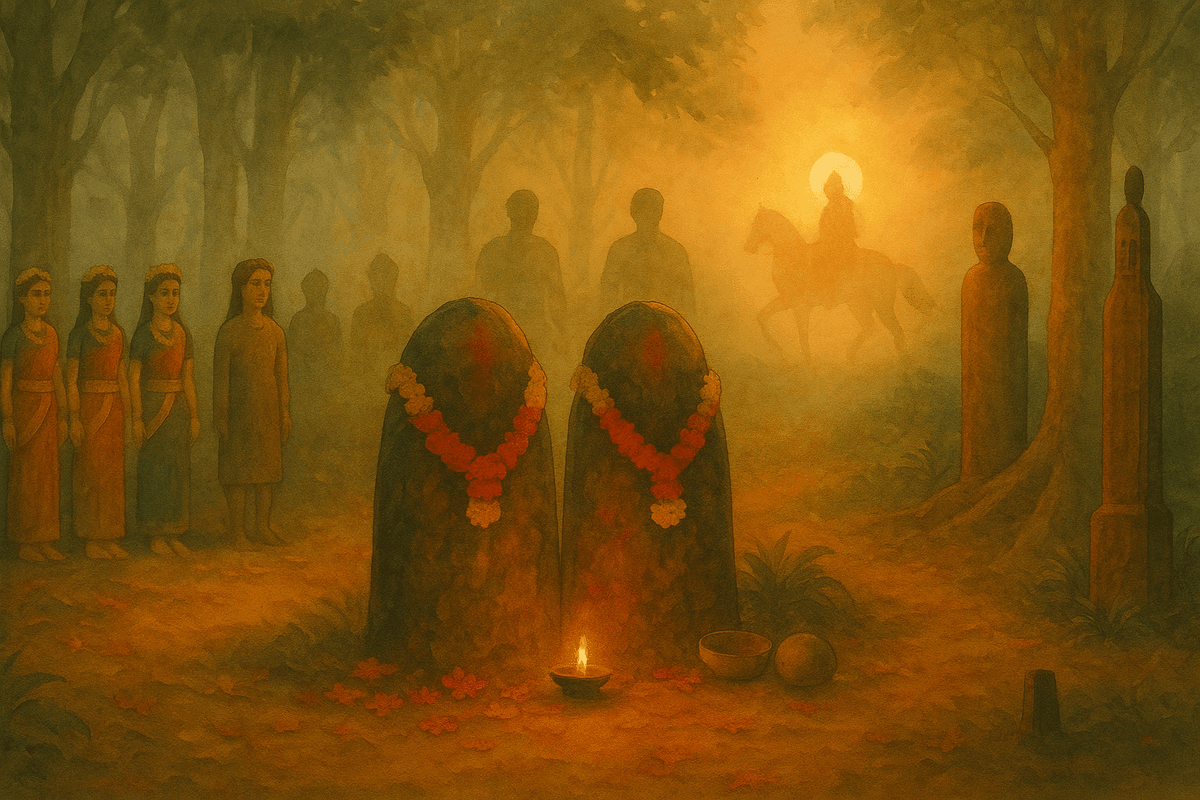
The Sacred Aadishthala at Kuthar
As narrated in the Paradana (traditional oral ballad) of Swami Koragajja, from Kannadakere to Bardhakatte, Ullaya dedicated this land to Swami Koragajja and Guligajja for its protection. Swami Koragajja is worshipped at Valasari place of Shri Mahavishnu Dhoomavathi shrine and as the deity who guards the Yelver Siri's beneath the Sanctum of Raktheshwari (Lekkisiri).
All these accounts pertain to the Aadishthala — the original sacred abode — of Shree Raktheshwari, Bermer, Yelver Siri's, and Koragajja at Kuthar, which is now undergoing renovation. This shrine, recognized as the original seat of Swami Koragajja, is associated with 16 hereditary family lineages (manethanas).
The traditions, stories, and divine associations found here are not seen in any other region, affirming that this holy site is indeed the Aadishthala of Swami Koragajja.
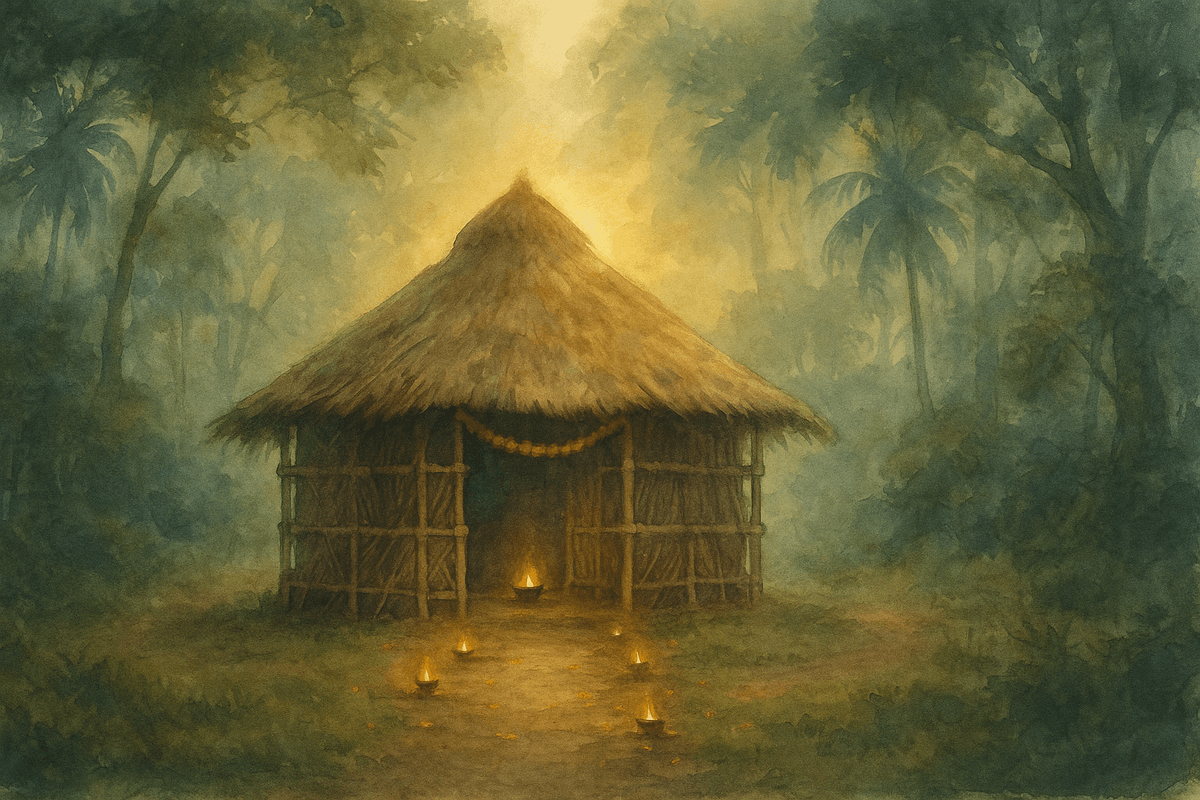
Ongoing Renovation and Future Rituals
At present, the responsibility for the renovation of the shrine has been taken up by Swami Koragajja himself. The renovation works of the shrine are progressing with great vigor, and after the consecration ceremony (Brahmakalasha), it is planned to conduct:
• The Dharma Nadavali Seve (ceremonial service) for Raktheshwari Amma
• The Siri Jatre (annual festival for the Siri's)
• The Nitya Kola Seve (daily ritual performance) for Koragajja.
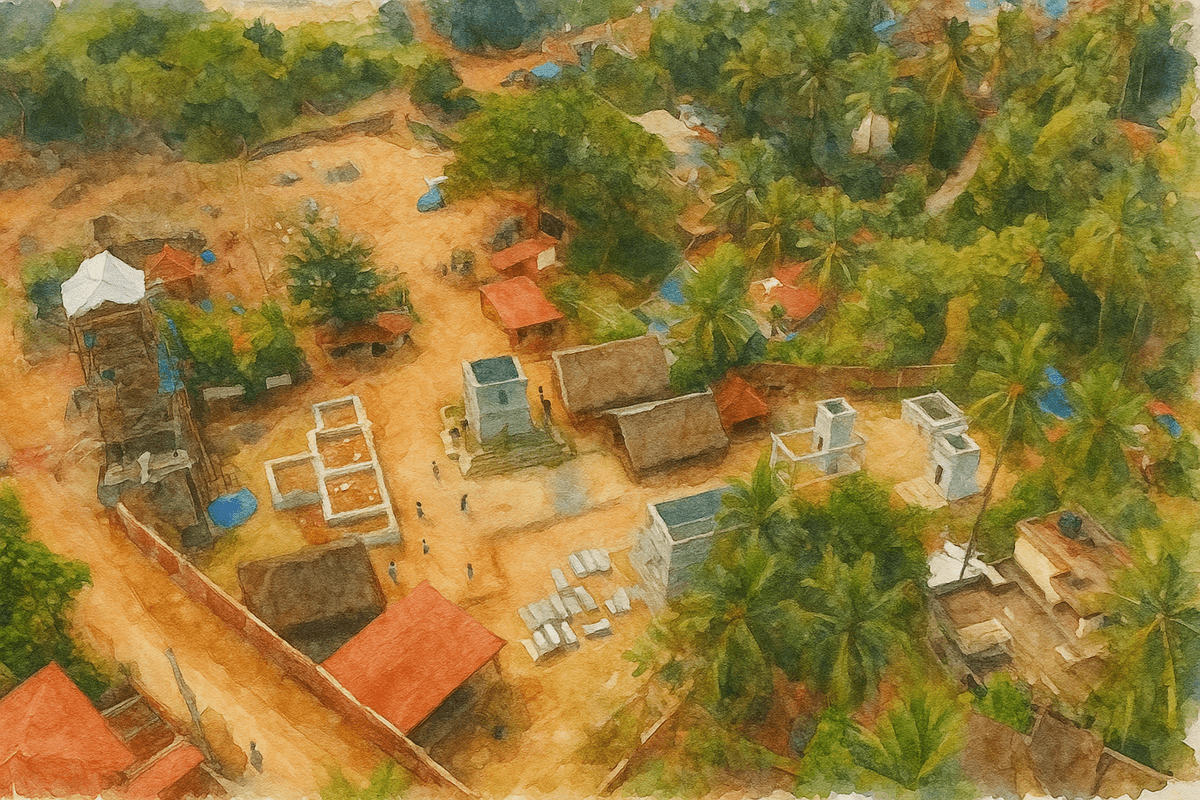
Kannadakere
In most places across Tulu Nadu, the worship of Lekkisiri takes place in naturally gifted spots near flowing water or beside a pond. Similarly, connected to this shrine is an ancient lake known as Kannadakere, located nearby — approximately two furlongs away.
It is said that within this lake there are seven smaller ponds. This lake is associated with our holy shrine and holds several unique features. In the past, waves would rise within the lake like those of the sea, crashing against its banks.
Elders also recount that in earlier times, a special type of shell (Pachchile) found in this lake could be used to prepare medicine that cured respiratory ailments such as cough.
Overall, this remarkable and historically significant lake now stands in a dilapidated state, longing to regain its former beauty.
